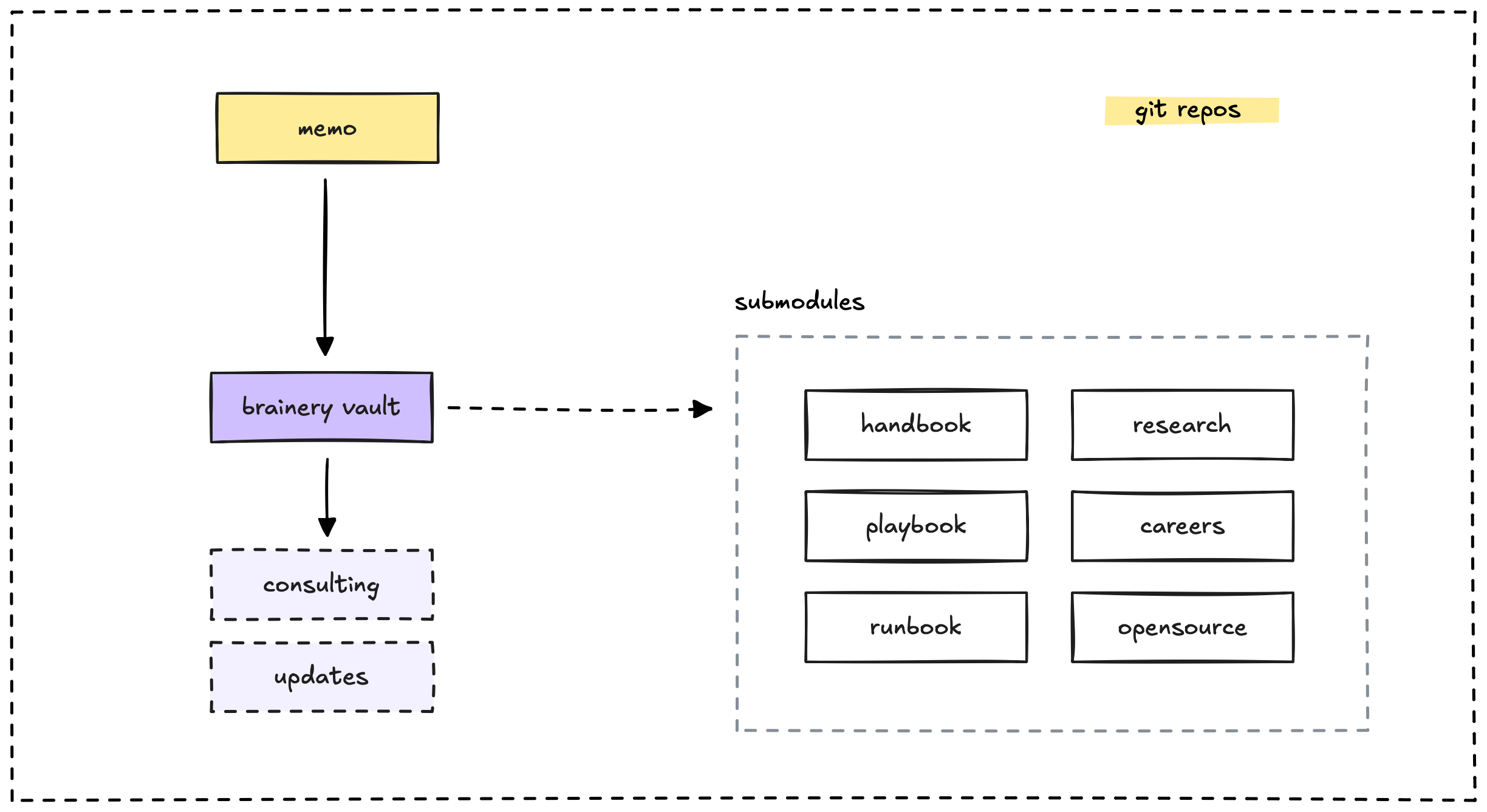We heavily rely on Git submodules to link multiple content repositories together for the Memo platform. Initially, these repositories were organized based on purpose, such as handbook or playbook content. As the project evolved, more repositories were introduced, eventually leading to the structure centered around the brainery vault.
To allow developers to browse these repositories using the standard Git interface without breaking the history, we've kept them as separate entities.

When a sub-repository is updated, it triggers a workflow in the main repository to update the Git commit reference for file preparation. Following this, the build pipeline runs to process the changes.
Git workflow and content management
The development environment leverages Git for version control and includes specific configurations for managing our content repositories. The main repository is set up to:
- Ignore build artifacts, environment files, and generated content.
- Utilize Git submodules for organizing and managing content.
- Provide scripts for fetching and updating content efficiently.
Workflow related to Git submodules
Git submodules are crucial for how we manage our content repositories. Here's a look at the key workflows involving them:
Fetch process
The git-fetch.sh script handles updating our nested submodules. It:
- Uses depth limiting to improve performance during fetching.
- Provides an HTTPS fallback in case of SSH failures.
- Maintains a cache to avoid unnecessary updates.
CI integration
Our GitHub Actions workflows automate submodule updates. They are configured to:
- Update submodules before content processing begins.
- Limit recursion depth to prevent excessive fetching operations.
